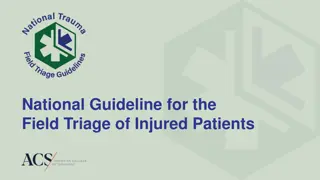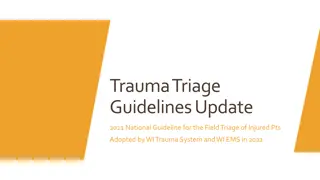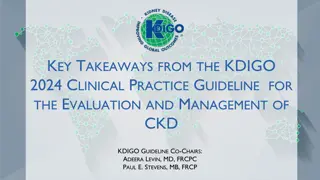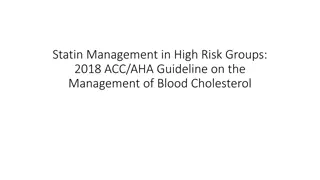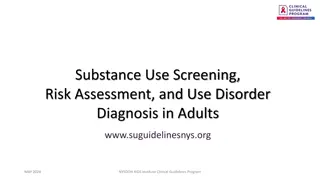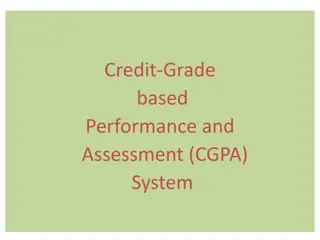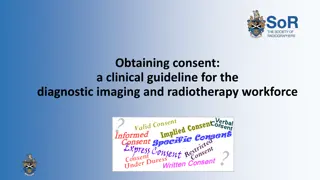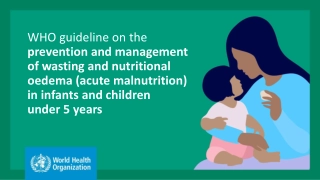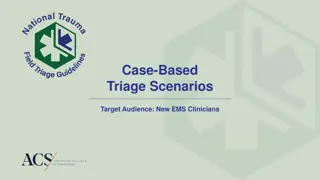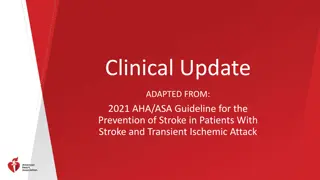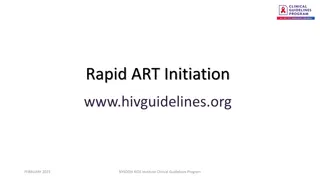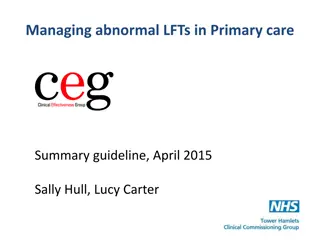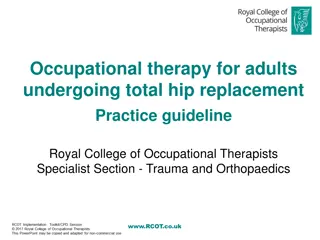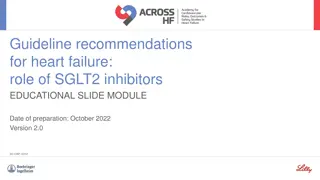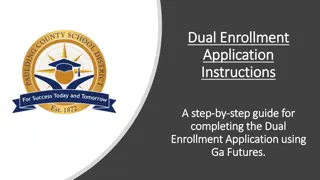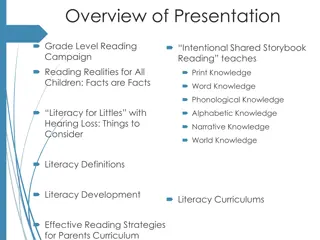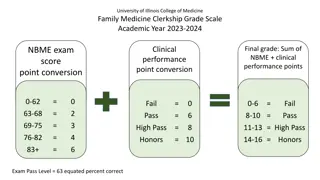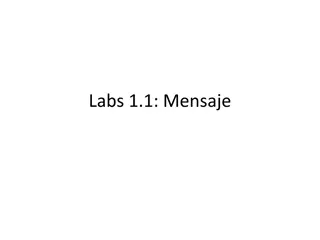Step-by-Step Guide to Using the GRADE Approach for Guideline Development
This step-by-step guide outlines the process of utilizing the GRADE approach for developing guidelines in healthcare. It covers key stages such as formulating questions using the PICO format, selecting and rating outcomes of interest, conducting a systematic review, grading evidence, and translating evidence into recommendations. By following these steps, guideline developers can ensure a structured and evidence-based approach to creating high-quality recommendations for clinical practice.
Download Presentation

Please find below an Image/Link to download the presentation.
The content on the website is provided AS IS for your information and personal use only. It may not be sold, licensed, or shared on other websites without obtaining consent from the author. Download presentation by click this link. If you encounter any issues during the download, it is possible that the publisher has removed the file from their server.
E N D
Presentation Transcript
Using the GRADE approach for Guideline Development A step-by-step guide Thomy Tonia MSc, David Rigau MD. ERS Methodologists 1
Before starting. Configure Guideline panel Declare conflicts of interest and ways they will be dealt with Define the scope of the Guideline Target population What to cover (diagnostic and/or intervention and/or prevention strategies) 2
Documents producing recommendations have to use GRADE If you aim to make recommendations for clinical practice, you have to develop your document by conducting a systematic review, grading of the evidence and the recommendations strength (i.e. use the GRADE approach) 3
Step 1: Formulate the questions Step 2: Select outcomes of interest and rate their importance Step 3: Systematic Review Step 4: GRADE the evidence Step 5: Going from evidence to recommendations 4
Step 1: Formulate the questions Use the PICO format Population Intervention Comparison Outcome In patients hospitalized for COPD exacerbations is initial treatment with IV corticosteroids compared to oral corticosteroids better (e.g. reduction in length of hospital stay)? 5
Step 1: Formulate the questions Restrict the number of questions (about 7) Each PICO question will result in one recommendation No PICO question, no recommendation! 6
Step 2: Select outcomes of interest Select outcomes for each PICO question before conducting the literature review Outcomes should be importance driven and not evidence driven Select outcomes that are important to patients and important for clinicians decision- making Avoid surrogate outcomes (for example biomarkers) 7
Step 2: Rate outcome importance Rate the importance of the selected outcomes before conducting the literature review How important is each outcome for decision making? Not important, important, of critical importance Suggested rating scale: 8
Step 3: Systematic Review Pragmatic literature search Search for recent, well-conducted systematic reviews and build up on them Search main database(s) only MEDLINE Consider including CENTRAL (Cochrane Central Register of Controlled Trials) or EMBASE One assessor (no need of double reading of all references) 9
Step 3: Systematic Review Select studies according to predefined criteria Extract outcomes of interest Meta-analyse, when applicable 10
Step 4: GRADE the evidence Create evidence tables for each PICO question Evidence tables contain 2 parts: results and quality of evidence There are 4 degrees of quality: high, moderate, low and very low When assessing INTERVENTIONS: RCTs start from high quality; observational studies start from low quality 11
Step 4: GRADE the evidence Quality is always evaluated per outcome and not per study Outcome #1 Quality of evidence Outcome #2 Quality of evidence Outcome #3 Quality of evidence OVERALL quality of evidence comes from those CRITICAL outcomes for decision making 12
Step 4: GRADE the evidence Quality can be decreased (one or two levels per factor) based on the following factors: Risk of bias Indirectness Inconsistency Imprecision Publication bias QUALITY means CONFIDENCE IN RESULTS 13
Step 4: GRADE the evidence Risk of bias Consider potential methodological limitations of the studies that assess each outcome. Consider: concealment of allocation, intention to treat analyses, large loss to follow-up, etc.) A study (or group of studies) might have limitations for certain outcomes but not for others. 14
Step 4: GRADE the evidence Indirectness Indirect comparison (e.g. we want to compare drug A to drug B but have only found studies comparing drug A to placebo and drug B to placebo) Differences in population, intervention, comparison, outcomes of interest between the identified studies and the clinical question we want to answer. 15
Step 4: GRADE the evidence Inconsistency It refers to important and unexplained variability (heterogeneity) of the results among studies. This decreases our confidence in the common (pooled) estimate of results. Look at the similarity of each study estimates Look at the degree of overlap of 95%CIs Statistical criteria (e.g. I2) Look for possible reasons of variability 16
Step 4: GRADE the evidence Imprecision Is the 95%CI of the effect precise enough to take a decision? If 95%CI ranges from appreciable benefit to meaningless effect (or even harm), our confidence is decreased because both upper or lower values of 95%CI may represent the true effect. Set a threshold for clinical decision making: Would your decision to recommend an intervention be different considering the lower or the upper values of the 95%CI? 17
Step 4: GRADE the evidence Publication bias Failure of reporting studies that were undertaken (often: showing negative effect) Difficult to estimate! Examine funnel plots Higher risk of publication bias when there are only very few small studies available that show positive effect 18
Step 4: GRADE the evidence Quality of evidence (QoE) per outcome Outcome #1 High QoE CRITICAL Outcome #2 Moderate QoE CRITICAL Outcome #3 High QoE IMPORTANT Outcome #4 Low QoE IMPORTANT OVERALL quality per question: MODERATE Rule: look at the critical outcomes; what is the lowest quality for a critical outcome?; this would be the overall quality for this particular question 19
Step 4: GRADE the evidence Quality is always evaluated per outcome and not per study Outcome #1 Quality of evidence Outcome #2 Quality of evidence Outcome #3 Quality of evidence OVERALL quality of evidence comes from those CRITICAL outcomes for decision making 20
Step 5: Going from evidence to recommendations Main factors that need to be considered: - Quality of evidence - Balance between benefits and harms - Values and preferences of the patients - Costs 21
Step 5: Going from evidence to recommendations Two degrees of recommendations (for or against an intervention): - Strong ( We recommend.... ) - Conditional ( We suggest ) It is possible to derive strong recommendations from low quality evidence, as quality is only one factor to take into account (see previous slide) 22
Need more help? Please see the separate document in the ERS website with further resources for producing evidence-based guidelines Read our FAQs found in our website Contact the ERS Methodologists, Thomy Tonia (thomy.tonia@ersnet.org) and David Rigau (david.rigau@ersnet.org) 23



